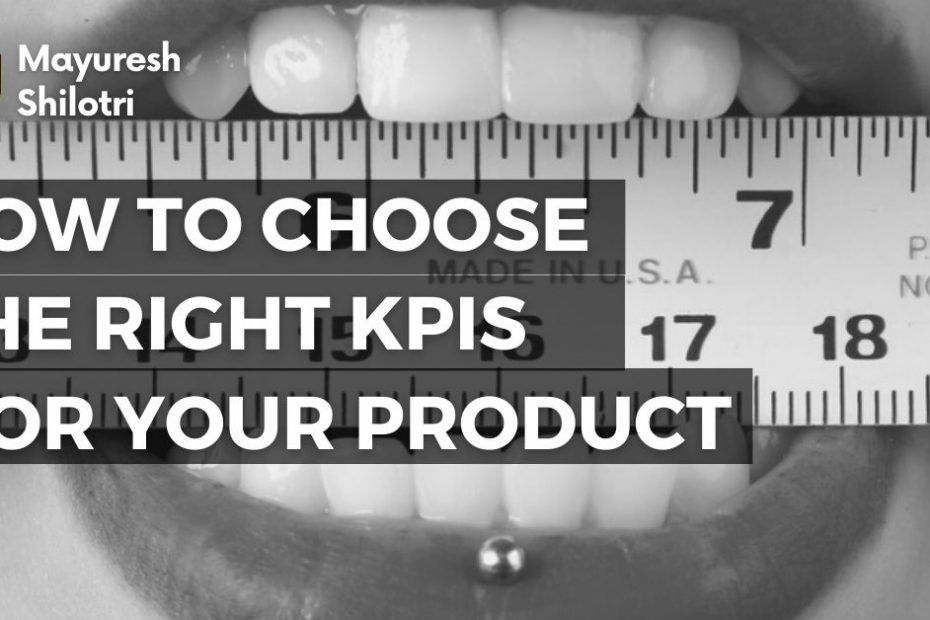Understanding KPIs or Key Performance Indicators becomes exceptionally crucial, especially if the business metrics of a company are concerned. KPIs or Key Performance Indicators analyze a company’s progress toward its strategic goals.
Using Key Performance Indicators (KPIs) is an effective way to measure a team’s performance and analyze the remarkable attempt that determines where they fall short. That is why choosing the right KPI for the business is extremely crucial.
- Words:1016 (Skim friendly)
- Type: Post
- Video:0
- Slides: 1
- Topic: How to Choose the Right KPIs for Your Product
- TIME: 16 Minute
Understanding Key Performance Indicators (KPI)
KPI, usually referred to as a Key Performance Indicator, measures and analyzes the progress and performance that takes place over a certain period of time.
Through KPIs, the primary objective and goals are brought to the limelight. High-level key performance indicators majorly target the overall performance of the company. On the contrary, low-level KPIs look after productivity and processes.
In any case, a company monitors approximately 10 KPIs, as going beyond the mark can hamper the needful requirement of any organization. KPIs are of various types, including financial performance, talent, and product management metrics. Gradually, the KPIs ensure uncovering KPIs and gathering data-driven insights on a regular basis.
What is the importance of KPI?
KPIs are the most useful and important weapon for any organization/business to meet strategic business goals. There are plenty of insights that KPIs help with, including:
- Measuring progress – KPIs are responsible for measuring the progress of any business-related objective. For instance, if a company plans on increasing sales by 70%, then KPI metrics like monthly sales growth and booking can effectively track whether or not the goals are being met.
- Understanding Problems & Solving Them – KPI analysis helps to uncover and understand an issue that can fall off the radar. For instance, marketing KPIs that gather the data of any company’s statistics, like the bounce rate, can reveal the website’s performance to calculate slow loading or broken links.
- Examine Company Health – There are many ways to group KPIs, such as operational, organizational, leading, lagging, customer growth, etc. When all of these are combined, it reflects an organization’s performance.
- Read through Patterns – KPIs are generally accumulated over a certain period, like every month. Therefore, product sales aren’t growing signals the need for a marketing campaign. Additionally, more frequent product returns depict a lack of manufacturing.
How To Choose the Right KPIs?
Before a business chooses its KPI, it should first establish its goals. What are the factors that add to the key performance indicator that works out for your product and, eventually, for your business?
When choosing your KPIs, the questions to definitely consider are:
- Have you identified the goals for your business? – KPIs and business goals should go hand-in-hand. Thus, identifying the goals is mandatory. In a usual case, within a 12-month period, a company should target at 3 to 5 goals. KPIs will immensely help monitor the goals during a definite period.
- Are the goals measurable? – KPIs contribute to tracking progress; therefore, all goals must be specific and quantifiable. KPIs for the goals must include metrics like conversion rate and lead generation cost that will assist in achieving a better outcome.
- What are the leading and lagging indicators of your business/product? – KPIs belong to two main sectors: leading and lagging. With the help of leading indicators, it is possible to make future predictions. For example, if there is an increase in the headcount of the number of employees, it will automatically increase revenue growth. Leading indicators are the best for businesses as it helps them to expand their opportunities and allow them to make room for upcoming strategies.
- Which trends are extremely helpful? – Leading trends in any business greatly assist in understanding any company’s trajectory toward meeting its goals. KPIs illuminate these trends to leverage the maximum potential of any company. For example, if the sales of a company increase within the past few quarters, it is a great idea to target more buyers for upcoming campaigns.
Types of KPIs
Most KPIs fall primarily under two categories:
1. Qualitative KPIs
A qualitative KPI is mainly used for tracking non-numeric data, for example, customer engagement or customer comments. Usually, qualitative research is conducted to gather qualitative data, but these KPIs mainly focus on non-numerical data.
For instance, a company released a brand new product online. Quantitative metrics like product sales, product page views, and abandoned carts are certain factors that are calculated. In addition to this, qualitative measures like customer reviews and customer surveys.
2. Quantitative KPIs
Quantitative KPIs work through numbers to measure the goals and metrics. Customer service tickets, annual revenue, closed sales, etc., are quantitative measures.
Some of the other KPIs include:
- Process KPIs – Process KPIs are responsible for tracking the progress of a new process and achieving potential changes accordingly.
- Actionable KPIs – Actionable KPIs analyze a company’s commitment to smoothly carry out internal business changes. Example of actionable KPIs includes employee sentiment, DEI initiatives, and culture changes. Their metric analysis is measured chiefly within a specific span of time.
Conclusion
Finding the right KPIs for your product could become hard initially; however, once you find it, the path to meeting the right set of goals is set. Every business is bound to have its own set of metrics, objectives, and goals. KPIs measure these factors to analyze the growth and performance of the business.
Every business aims to grow, and KPIs are extremely crucial to track and measure the progress of a business or product. It helps a business to grow massively. When you work with powerful KPIs, your business gets an added advantage. They have the capacity to focus, scale, and prioritize various process that helps in achieving the goal.
Photo by Rodolfo Clix
Join to get sneak peek into what's happening
I write about books, experiences, product, UX, EdTech, early stage growth, validation – mostly tech. Subscribe if these topics interest you. Once every 15 days emailer. I promise – No spam. (I am known for it otherwise) 😉




